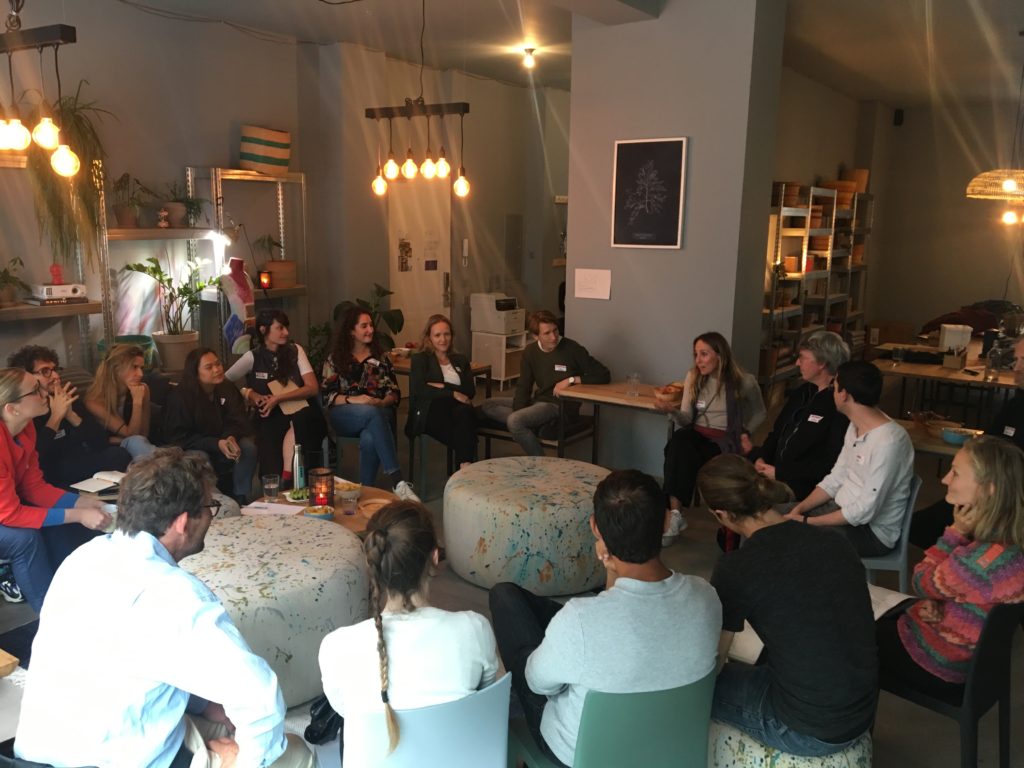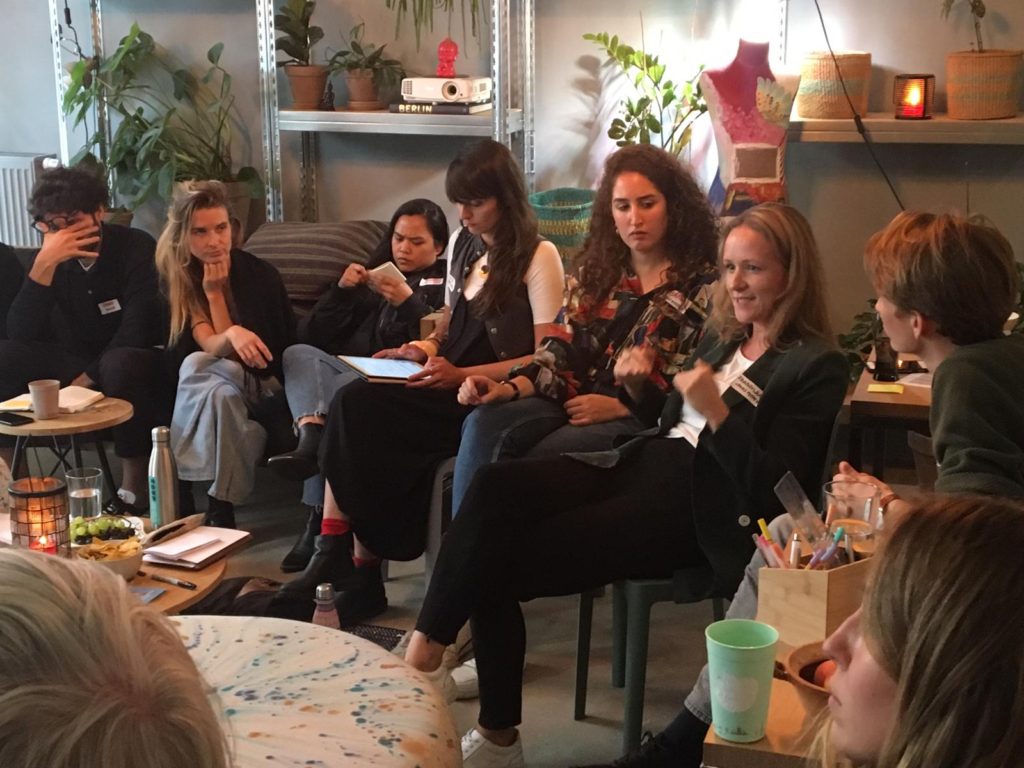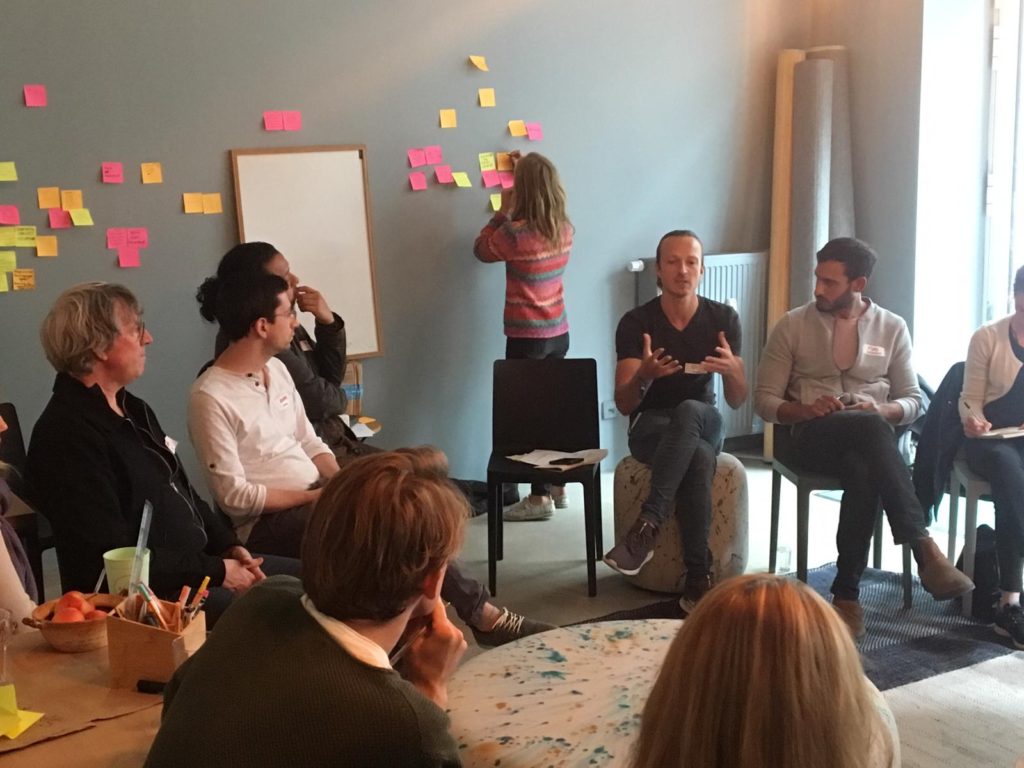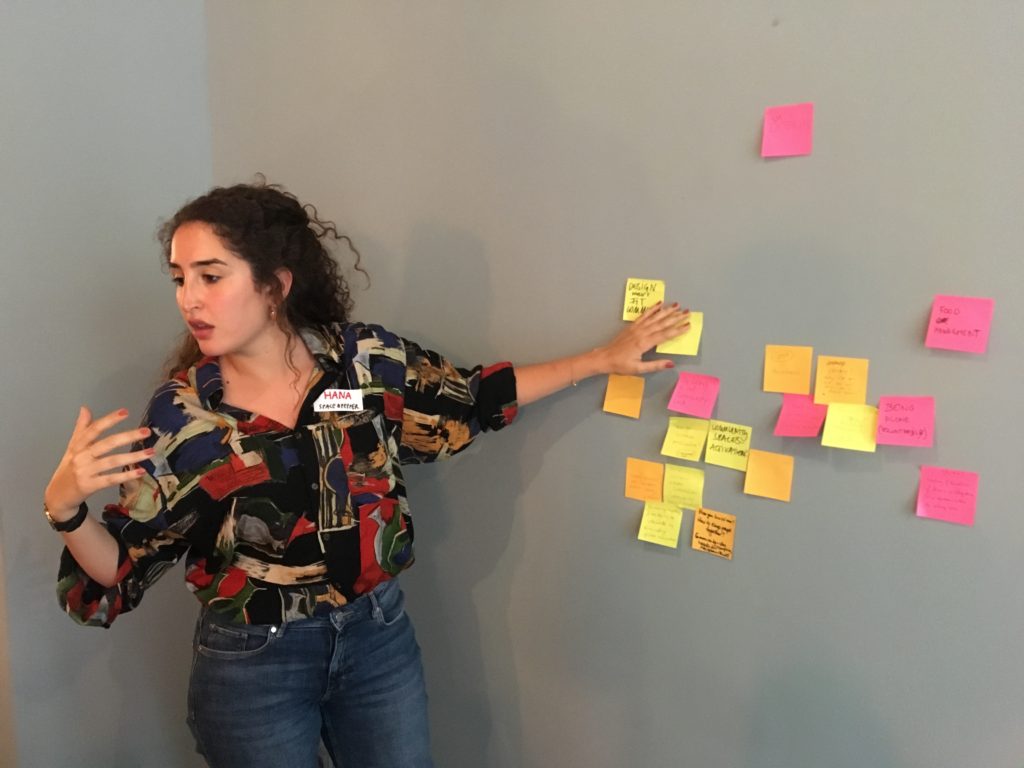Coliving has the potential to transform the way we live for the better. However, there are many pressing questions which must be addressed if the trend is to continue in a way that has positive social value for everyone.
What if we could tap into the collective wisdom of people in the sector so far in order to identify some of the current best answers?
It is in this spirit that Conscious Coliving, a coliving consultancy, has begun partnering with coliving players to host a series of meet-ups, one per core aspect of the The Conscious Coliving Manifesto: environmental sustainability, personal and collective wellbeing, and thriving community.
This meetup took place at Venn Raum. It was co-organized by Co-Liv and Space&Pepper, focusing on the question “How can coliving foster thriving communities?”. Speakers and participants were invited to explore both the positive sides and the shadow aspects of coliving, with Yoav Goldwein from Urbanist, Gui Perdrix from Co-Liv (also, founder of Art of Co), Hana Ahriz and Franziska Heuschkel from Space&Pepper, and Jonathan Imme from The Collective.


Expert Keynotes
Yoav from Urbanist began by providing a macroeconomic overview of urbanization trends over the past few decades. He shared insights regarding real estate, politics, and social and economic issues that frame the development of the coliving sector. For instance, rising house prices, geographic mobility and people having children at a later age are key drivers in the rising demand for coliving. He closed by talking about the disruptive potential of coliving, especially in regards to local communities, equally highlighting the importance of staying present to shadow elements such as gentrification.
Gui from Co-Liv, who has run several coliving spaces in the past years, shed light on how loneliness can still sometimes occur in coliving spaces. While coliving can fulfill the human need of belonging, if not done well, it can actually lead to more isolation. This is because since sharing a lot of space and intimacy is a prerequisite in a coliving space, if there is an uncomfortable feeling with others, people may withdraw mostly to their own rooms. He closed with two questions:
- How can we create spaces that enable a feeling of belonging?
- How can create spaces that offer more of a sense of ownership and responsibility?
Franziska and Hana from Space&Pepper shared their approach to supporting community spaces. They began by highlighting the many decisions that need to be made in developing a coliving space in regards to design, operations, governance and more. In an ideal world, key aspects around “sense of belonging” would incorporated in every decision. However, in the real world, teams developing coliving spaces face lots of regulations, which leaves little room to put themselves in the shoes of future residents and think deeply about their needs. Space&Pepper helps address this problem by supporting developers to gain a deep understanding of the user early on.
Finally Jonathan from The Collective guided us through specific examples of Monopol, a former distillery which will be the new home of the Collective Berlin. They are running a comprehensive co-creative process to deeply understand the local community’s needs. So far they have built a strong relationship with local district authorities and established a neighborhood circle which regularly feeds back on The Collective’s plans. They are present at neighborhood-fests where they ask people to share what is lacking locally, for instance regarding a kids’ playground. Increasingly, Monopol is looking for collaboration opportunities with local actors such as schools and fablabs. Jonathan acknowledged that their project is gentrifying the area, but said that question is how can one do so in a cautious manner, and adopt clever subsidization schemes so that commercial schemes can subsidize social and educational offers.
Brainstorming the Shadows of Coliving
Participants were then invited to brainstorm the shadow sides of community-related aspects of coliving from their own perspective and experiences. Everyone placed these on stickynotes to co-create a wall of shadows.
These were categorized into two main groups: those pertaining to internal community (between coliving members) and external community (between members and local neighbors.) Under the category of internal community, the main shadows identified were:
- Lack of engagement in activities from member residents
- Lack of enough privacy within coliving spaces
- Loneliness due to feeling uncomfortable in shared spaces (e.g. introvert among extroverts)
- Spaces poorly designed for community interaction
- Sense of insecurity (e.g. things being misplaced or stolen)
- Lack of healthy meal options
- Coliving is not community led
Under the category of external community, shadows highlights included:
- Gentrification and unaffordability
- Displacement of local/lower income tenants
- Creation of UFOs in neighborhood that are alieniating to locals
- “Community-washing” marketing (coliving used as cheap marketing to rent overpriced flats)
- Social segregation


Exploring Shadows in Group Discussions
Everyone voted on three most pressing shadows and broke into corresponding discussion groups to be addressed during the rest of the evening. These shadows were:
- lack of Member Engagement
- space, privacy, and loneliness
- social and economic segregation
Each group was given the following questions to explore the shadow they were tackling:
- What positive experience have you had in addressing this shadow aspect?
- What other models/solutions are you aware of?
The next section summarizes the main answers each group came up with.
Shadow 1: Lack of Member Engagement
Venn shared that while they are putting a lot of effort into creating events for the members, their main challenge is getting member participation. Others in the room shared that they are also exploring ways to tackle this challenge.
Suggestions included:
- Take newcomers on a journey
- Creating an internal WhatsApp group for all members with subgroups for specific activities and interests. Venn for instance, has a WhatsApp group called “Meet your Neighbor,” which is very active with different subgroups.
- Building an ambassador program where “insiders with influence” encourage and incentivize members to attend events
- Organize events such as drawing parties, which have been successful at Venn
- Create spaces for story-sharing
- Organize a series of events with progressively unfolding content, in order to give members something to look forward and be curious about each time. In other words, have an event programming that is clear, short, and tells a story.
- Strengthening community through a shared purpose (e.g. volunteering, spiritual growth, etc)
Shadow 2: Space, Privacy, and Loneliness
Suggestions included:
- Adopt a user-centric approach that regularly assesses member needs
- Design for differences (e.g. families want more private space, young people more drawn to sharing economy)
- Empower people by giving them a choice.
- Choice of different spaces: totally private (with shared events) up to totally open (shared living and sleeping rooms)
- Different levels of intimacy (living room for 5 people and living room for 70)
- Ability to change environments (space to be alone and silent)
- Some projects offer a full studio for more privacy, some a shared bathroom, some more communal living.
- Have default levels of sharing and allow for hard “nos (e.g. clarifying things that cannot be shared such as expensive snacks).
- Design for acoustic intimacy (spaces that allow for parties,Djing, etc without disturbing others)
- Help newcomers connect with other new expats in the city
Shadow 3: Social and Economic Segregation
This group discussed that while coliving could be meeting a need for young people, it unfortunately might be on its way to being blacklisted in cities like Berlin because it is being associated with gentrification.
Suggestions for addressing social and economic segregation included:
- Look for ways to cross-subsidize rental units with other activities. For example, Jonathan shared a project that is has a future-based foodlab which serves as a kitchen for coliving residents, but is also experimental lab for startup companies in the mornings, and serves as an environment for kids to be educated around food production in an urban environment.
- Collaborate with government and other corporates to avoid passing on all the investments made inside coliving space to coliving tenants and rather spread them over more shoulders.
- Explore the option of mixed use development. For example, Spreefeld has rental units which are complemented by commercial spaces, workshops and other spaces that the community can have access to. This enables the running of a more complex and resilient coliving business model as well as helping with integration with the local neighborhood.
- Link up with nonprofits such as cohousing cooperatives which may have more access to resources and land subsidies from the city, which may make coliving more affordable.
- Explore the option of using crypto currencies as an alternative to fiat currency in order to promote community-based income and make things more affordable.
Wrapping up
This is the first of a series of events to be run in Berlin, London and Paris over the next couple of months. This event series will be exploring powerful questions around the 3 main areas of The Conscious Coliving Manifesto: environmental sustainability, personal and collective wellbeing, and thriving community.
Our final reflection is that by co-creating open spaces that tap into collective wisdom, we can support each other in finding innovative answers to some of the most challenging questions that the sector needs to address.
So stay tuned for more insights and collective wisdom sharing!
This article has been coauthored for you by:
Transformational Coach and facilitator. Trainer in mindfulness, sharing circles, and how to live and lead more consciously. Co-author of the Community Facilitation Handbook and the Coliving Apps & Tech Guide. Facilitates community engagement strategies.
Juan is a Communications Strategist, Project Manager, Systems Engineer, Team Coach and Executive Coach with an ontological/systemic approach. Co-author of the Coliving Apps, Software & Tech Guide and contributor of The Community Facilitation Handbook. He facilitates connection for individuals, teams, and communities.